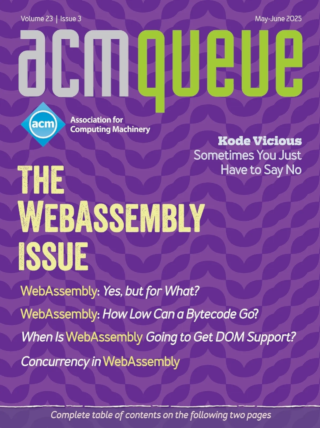David Chisnall - How to Design an ISA
Over the past decade I've been involved in several projects that have designed either ISA (instruction set architecture) extensions or clean-slate ISAs for various kinds of processors (you'll even find my name in the acknowledgments for the RISC-V spec, right back to the first public version). When I started, I had very little idea about what makes a good ISA, and, as far as I can tell, this isn't formally taught anywhere.
Gabriel Falcao, João Dinis Ferreira - To PiM or Not to PiM
As artificial intelligence becomes a pervasive tool for the billions of IoT (Internet of things) devices at the edge, the data movement bottleneck imposes severe limitations on the performance and autonomy of these systems. PiM (processing-in-memory) is emerging as a way of mitigating the data movement bottleneck while satisfying the stringent performance, energy efficiency, and accuracy requirements of edge imaging applications that rely on CNNs (convolutional neural networks).
Mohamed Zahran - Heterogeneous Computing: Here to Stay
Mentions of the buzzword heterogeneous computing have been on the rise in the past few years and will continue to be heard for years to come, because heterogeneous computing is here to stay. What is heterogeneous computing, and why is it becoming the norm? How do we deal with it, from both the software side and the hardware side? This article provides answers to some of these questions and presents different points of view on others.
David Chisnall - There’s No Such Thing as a General-purpose Processor
There is an increasing trend in computer architecture to categorize processors and accelerators as "general purpose." Of the papers published at this year’s International Symposium on Computer Architecture (ISCA 2014), nine out of 45 explicitly referred to general-purpose processors; one additionally referred to general-purpose FPGAs (field-programmable gate arrays), and another referred to general-purpose MIMD (multiple instruction, multiple data) supercomputers, stretching the definition to the breaking point. This article presents the argument that there is no such thing as a truly general-purpose processor and that the belief in such a device is harmful.
Comments
(newest first)



